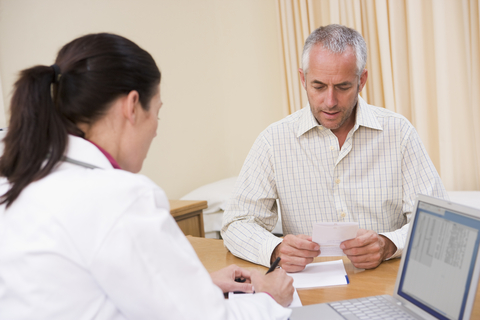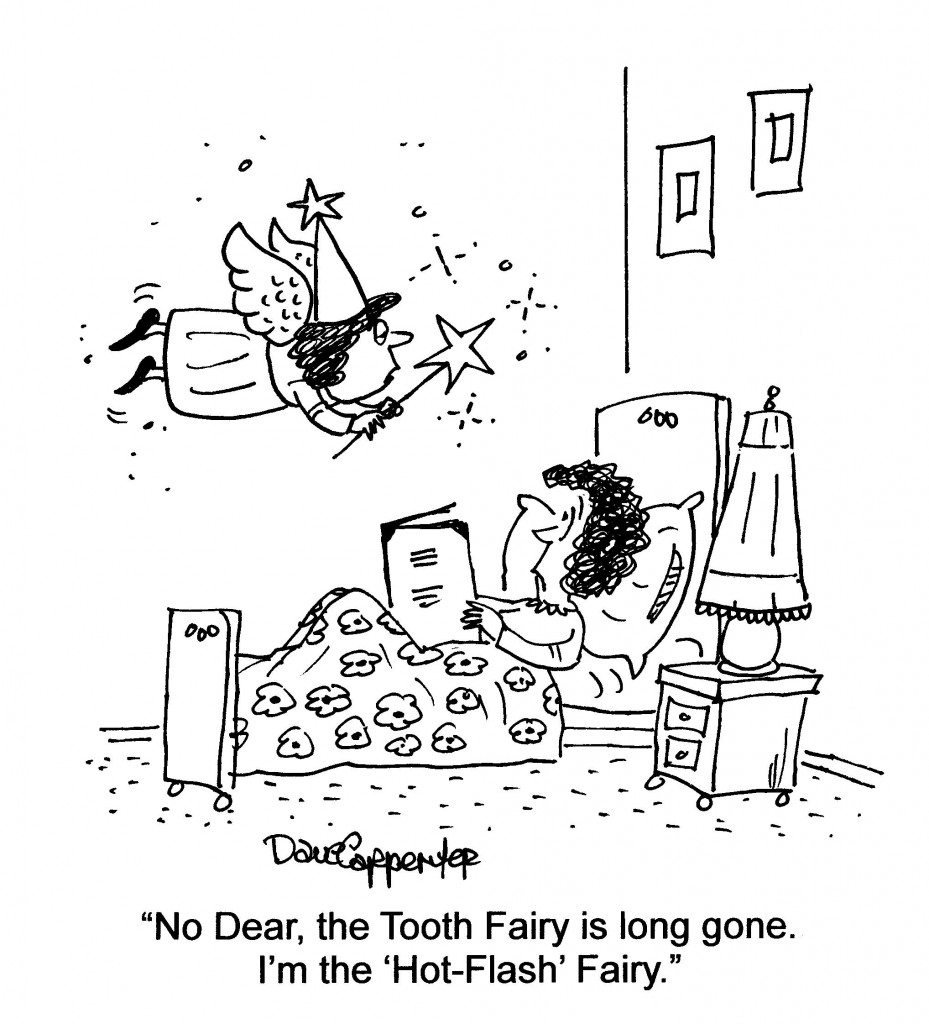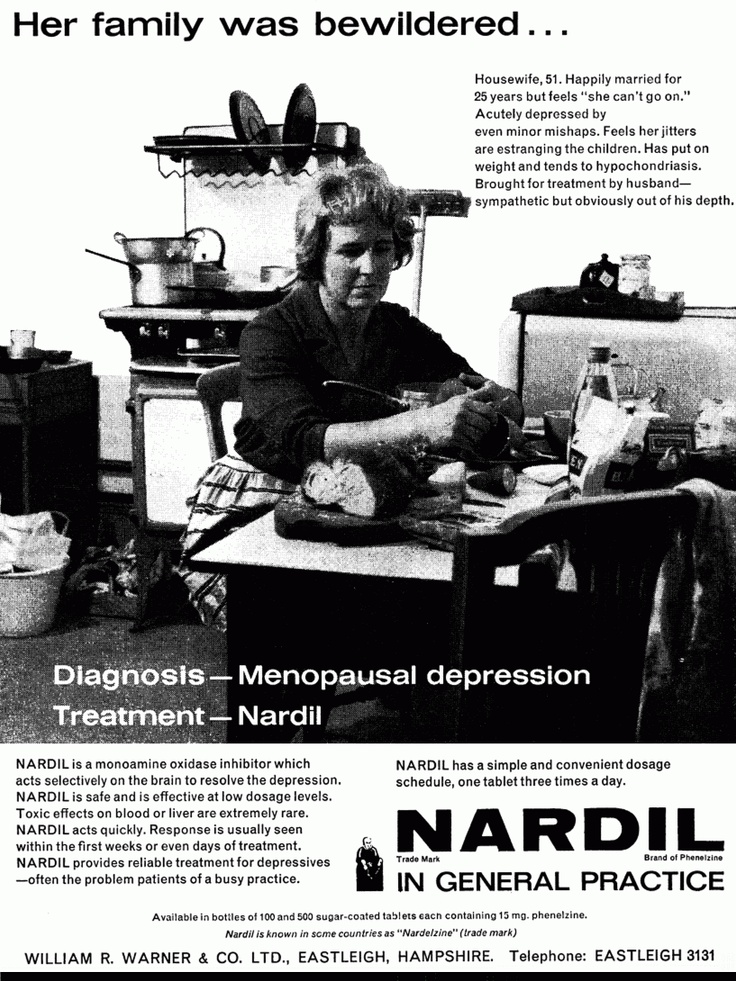Guyside: Get advocaty, dude
My forties have been a tumultuous time for me, healthwise. Essentially, I went from someone who had few problems physically or psychologically — at least ones I was willing to acknowledge, even to myself — to a rare diagnosis of bladder cancer, a bout of clinical depression, and some of the stresses and damages that go along with the clock.
I’ve lost a parent, a parent-in-law, and a number of friends. And one of the things that I’ve learned through my experiences and those of friends and loved ones is the value of being a self-advocate for your own health.
It’s not just a cliche that men don’t take care of themseves. It’s a fact. A 2011 article in Monitor on Psychology points out that not only do men take worse care of themselves than women, they are far less likely to seek health care out. That double whammy could contribute to men’s shorter life expectancy.
So how do we become better self-advocates?
First, we need to go to the doctor (or, in my case, the nurse practitioner), and we need to be more clear about why we’re there. A WebMD article tells the story of one man who visited Dr. Paul Haidet:
“A 50-year-old Boston dockworker with no serious illness in his past, the patient said the cough had been hanging on for three weeks. Haidet noted the details, performed a physical exam, and diagnosed an upper respiratory tract infection. “The guy had a cold,” Haidet tells WebMD. He recommended cough syrup and was about to leave, but something gave him pause. The patient “just had this weird look on his face,” Haidet recalls.
Haidet learned that the man’s best friend had recently died of lung cancer and when his friend was diagnosed, he had a very similar cough. As a longtime pack-a-day smoker, the patient was afraid his number was finally up.”
Second, do some research. I read a lot of stuff. And I try to read it critically, to understand the context. For example, if I read an article about a lawsuit over a bladder-cancer drug, I don’t have an immediate fear reaction; I learn the particulars. Be sure to use reputable sites like the Mayo Clinic, WebMD, the NIH, the AMA, or associations concerned with a disease.
3. When you’re in a doctor’s office or at a clinic, don’t just nod your head. Come in with questions, and be prepared to ask for clarification of terms or concepts that you don’t understand. The Agency for Healthcare Research and Quality has a great checklist of questions for tests. That’s just one resource you can use.
4. Be politely persistent. I recently was searching out a referral to a specialist. Turned out the referral was being sent to the wrong place by my family practice. If I hadn’t been persistent in asking, who knows how long it might have taken to make it work. Because I discovered the error by checking with both sides of the transaction, I was able to ensure the connection was made, reducing my wait time.
These are just a few things we can do. If you’re looking for more ideas about self-advocacy, check out these resources:
- Seven Counties’ Introduction to Health Policy and Advocacy
- Be Your Own Health Advocate by WebMD
- The Center for Advancing Health
- “Be The Squeaky Wheel” by Care2
And remember: As of January 2014, Guyside will now be taking over the Wednesday Bubble slot, and if you’ve got something to say around the topics of men, health, and aging, we want to know. If you are interested in contributing, drop us a note at flashfree111@gmail.com.
Read MoreDepression: the silver lining
I’ve written about depression quite a bit on Flashfree. Not only is age a risk factor among women (with the highest reported levels in women between the ages of 40 and 49) but, the risk of depressive symptoms may be as much as three times higher among women across the menopausal years compared to women who have not yet reached menopause. Moreover, the risk may be more than twice as likely among women who’ve never had depression previously.
However, there is a silver lining: researchers are reporting that in some women, particularly those who experience depressive symptoms for the first time around the time of menopause, depression will eventually dissipate over the eight years following the final menstrual period. In fact, this was proven true in over 200 women whose symptoms were evaluated over a 14 year period around menopause. In this group, depression scores were significantly higher the 10 years before their final period and then decreased roughly 12% per year after their final menstrual period. For women with a history of depression, the odds were not quite as favorable; these women were 13 times likelier to develop depressive symptoms around menopause, and may be as much as 8 times likelier than other women to have recurrences of the blues in the years following the final menstrual period.
The researchers note that women who have greater variability in their levels of FSH — follicular stimulating hormone — may be more likely to develop depressive symptoms during menopause. However, the quicker that these levels change, the more likely a woman is to move past the depression as she gets further into menopause.
The old adage, ‘this too, shall pass,’ may be quite true when it comes to depression during menopause. For women whose history overrides the FSH factor, a reduction in stress, psychotherapy, low doses of SSRIs and a boost in physical activity may help to keep things in balance, especially overall wellbeing.
Read MoreWednesday Bubble: No mystique, just perseverance
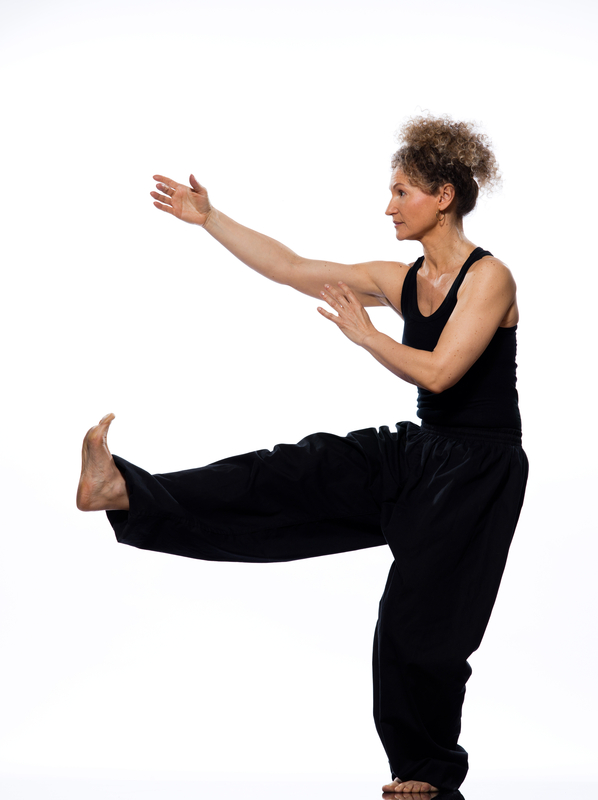 Time for another menopause downer…followed by some good news! First the downer: declining levels of estrogen during menopause tend to reinforce a decline in the body’s ability to naturally metabolize blood fats and its ability to fight off the ravages of oxygen-free radicals, you know, free roaming oxygen ions that can wreak havoc on the immune system. The result is often an upsurge in heart and other metabolic diseases. You can read more about those conditions here.
Time for another menopause downer…followed by some good news! First the downer: declining levels of estrogen during menopause tend to reinforce a decline in the body’s ability to naturally metabolize blood fats and its ability to fight off the ravages of oxygen-free radicals, you know, free roaming oxygen ions that can wreak havoc on the immune system. The result is often an upsurge in heart and other metabolic diseases. You can read more about those conditions here.
Okay, so the good news: it appears that Tai Chi training may help increase the body’s antioxidant defenses in both pre- and post-menopausal women! In fact, in a study published a few years ago in the Journal of Aging Research, investigators noted a marked change in antioxidant markers normally related to aerobic exercise, as well as a decline in a marker for heart disease risk.
For those of you unfamiliar with Tai Chi, it is an ancient Chinese martial art form that combines breathing with smooth, gentle postures. It may look fairly tame, however, having studied Tai Chi for a short period of time, I can assure you that it’s damn hard. Moreover, despite appearances, it is a weight-bearing exercise that not only strengthens muscles but also is on par with moderate intensity aerobic exercise. It has also been shown to improve mobility, flexibility and balance, improve sleep and overall wellbeing, and even enhance the circulation of blood through the smallest of blood vessels.
I’ve written about the effect of breathing on stress and the body’s stress markers. However, it appears that when Tai Chi is combined with slow and deep breathing exercise (i.e. 6 breaths per minutes) overall benefits are boosted. Indeed, two, 75-minute Tai Chi sessions a week combined with two hours of at home practice appeared to do just what the doctor ordered. These sessions involved 10 min of warm up/stretching, 60 minutes of Tai Chi (45 minutes 18-posture Tai Chi and 15 min Tai Chi Fan Style) and an initial check in period. In addition to the slow, rotational, fluid movements (1.5 minutes per motion), the women participating in the study were taught to control their breathing. Over the eight weeks, they also underwent blood and had physical fitness evaluations.
The findings? Tai Chi training improved balance, flexibility and leg extension strength in all of the women regardless of menopausal status. LDL cholesterol was also lowered. And, as mentioned, markers for antioxidant activity increased significantly while a marker for heart disease risk decreased.
Tai Chi is low impact and is especially valuable for women who may not be physically able to boost their aerobic routines. What’s more, once mastered, it can be practiced in the privacy of one’s own home. Once again, the mind-body connection proves to be pretty darn cool and important to health and wellness! This time, it might take some practice but perseverance rules the day! “There is no mystique to Tai Chi Chuan. What is difficult is the perseverance. It took me ten years to discover my chi, but thirty years to learn how to use it. Once you see the benefit, you won’t want to stop.” – Ma Yueh Liang
Read MoreMidlife. I don’t see four letters, do you?
A few years back, I wrote this post and it’s become evermore truer the older that I become. And so, on a Monday, I pose one question to you:
Do you believe that midlife is a four letter word?!
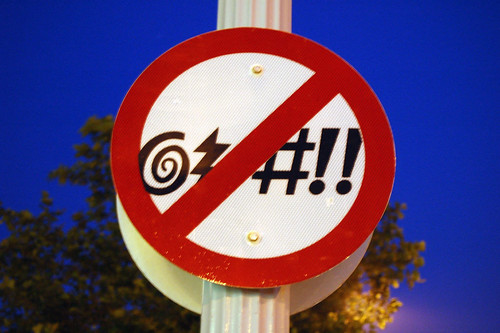
“The cultural narrative provided for women at midlife is either medical and menopause oriented — hot flashes, osteoporosis, heart disease, the estrogen replacement therapy decision — or socially devaluing –“empty nest,” a fertility has-been, abandoned for a younger woman, depressed.”
Wow! I read this introduction to a study that was published in the journal Social Work in the late 90’s and it got me thinking: what’s wrong with this picture?
Is midlife truly nature’s death sentence, a curse, a crumbling foundation foretelling a life well (or not so well) spent? When does this characterization become a self-fulfilling prophecy? And what can we do, as midlifers, to reverse this image? After all, change has to start somewhere, right?
A perfect place to initiate change is from a place within and a place outside of ourselves — by distinguishing ourselves from generations of women who came before us (for whom a self-view was often seen as selfish and whose opportunity to work outside the home was often trumped by the lack of quality positions) — and by asserting and reasserting our identities.
Are these steps in-line with the study findings?
The researchers, who investigated midlife experiences of 103 women between the ages of 40 and 59 reported the following:
- Respondents expressed high degrees of well-being, with 72.5% indicating that they were “very happy” or “happy,” and 64.3%, that this time was “not very confusing” or “not confusing at all.” However, despite being happy, many women still found this time of their lives challenging.
- Women who reported being most satisfied in their lives had a family income of at least $30,000 or more (which in today’s economy, is roughly equivalent to a little over $40,000), had good health, had at least one confidante or group of friends, had a high self-esteem, were not prone to self-denigration, and had a benign super ego.
One particular discovery that I find intriguing was that the groups scoring both the highest and lowest in midlife satisfaction unanimously agreed that what they liked best about midlife was increased independence and freedom, including freedom from worrying what others thought and freedom to develop a self-identity.
Not surprisingly, what women disliked the most about being middle-aged were physical changes, i.e. decreased energy, gray hair, wrinkles and extra weight.
Women scoring the highest in satisfaction and well-being also stated that they disliked the divide between how they saw themselves and how they imagined society saw them (positively and unattractive, respectively). Also at odds was the fact that they felt that men of the same age were revered for gray hair and wrinkles and did not lose social value in the same way that women did.
So, what are the biggest take-away messages?
- What matters most is not what women have but what they do with it
- Women actively participating in their lives and looking forward to new opportunities were the most satisfied
- Having a social world or at least one confidante with whom to speak freely and honestly about themselves, and feel understood, was critical
- Three selfs were also essential to wellbeing: self-effectance, self-acceptance and self-esteem
I know that certain things have changed since this study was published, such as the fact that research dollars are now being diverted away from simply looking at midlife changes in men and broadly applying the results across the genders, towards exploring midlife changes and how they specifically affect women’s health. What hasn’t changed, however, is the invisibility factor, that somehow, women over age 40 are no longer relevant.
So this is what I say:
Be relevant. Take the reins and effect change. Take a chance, a plunge. Value yourself. Embrace your friendships and your life. Grieve your former self and celebrate who are you are and who you will become.
Michelle Shocked once wrote “When I grow up, I want to be an old woman.”
When I grow up, I want to be. What about you?
Read MoreFriday Folly: Long in the tooth…
I was amused to read a post the other day on Facebook about a friend’s child awaiting the Tooth Fairy. And then it hit me: tooth fairy? I’m so long in the tooth that those days are long gone. Now? It’s the Hot Flash Fairy!
Hope you’ll get a few giggles; I did!
Read MoreThe path to healthy aging is paved with a healthy diet
Ladies, listen up! Have you heard the adage ‘a ripe old age?’ Well, researchers involved in the ongoing Nurses Health Study are reporting that an important key to healthy aging is diet. However, it’s not just any diet so before you convince yourselves that you’ve won the golden ticket, let me share that the focus is on modified Mediterranean, i.e. a diet rich in plant foods, whole grains, fish or omega-3 polyunsaturated fatty acids, a moderate intake of alcohol and a lower intake of red and processed meats.
For decades, experts have been sharing that people that follow a strict Mediterranean diet die less often from heart disease and cancer, have lower rates of stroke, cognitive impairment and depression and overall possess improved physical well-being and functioning. However, questions have remained with regard both to timing and also the exact dietary patterns.
Fortunately, a thorough review of dietary reports provided over a 15 year period by 10,670 women in their 50s and 60s shows that commitment to healthy eating in midlife provides women with a 40% greater likelihood of healthy aging.
So, what does ‘healthy aging’ mean exactly?
The researchers report that for the most part, and compared to ‘usual agers,’ healthy agers were free from chronic disease, were less likely to be obese and tended to suffer less from high blood pressure and high cholesterol. They also had fewer cognitive, physical or mental health issues or limitations. Most importantly, the benefits relied upon the ‘best of both worlds dietary habits,” i.e. a combination of an ‘alternative healthy eating index,’ (i.e. greater intake of veggies, less potatoes, fruits (excluding juice), whole grains, nuts, legumes, polyunsaturated fats and a lower intake of red or processed meats, juices, sugar, trans fats and sodium) and a traditional Mediterranean diet (i.e. veggies (excluding potatoes), fruits, nuts, whole grains, legumes, fish and monounsaturated fats, and a lower intake of red or processed meats and alcohol), which was found to boost health years later.
In addition to diet, another important takeaway from this information is the importance of the midlife time point: starting out on a healthy course in midlife predicted the likelihood of healthy aging, good health and overall well-being. The conclusion? No time like the present to make important dietary changes.
Read More
Bewitched, bewildered, and bemused…Nardil and the ‘pause
Regular readers of Flashfree know how amused and astonished that I am when I run across vintage menopause ads. This one is for Nardil, an agent used primarily to treat social anxiety and certain types of depression that don’t respond to other drugs, meaning that it is rarely the first antidepressant used. Ironically, while first prescribed for menopause in the Sixties, it remains part of the depression armamentarium 50 years later! Nardil has some significant side effects, including a worsening of depression and suicidal thoughts.
The housewife in the ad was brought into the doctor by her husband, ‘sympathetic but obviously out of his depth!’
Read More






